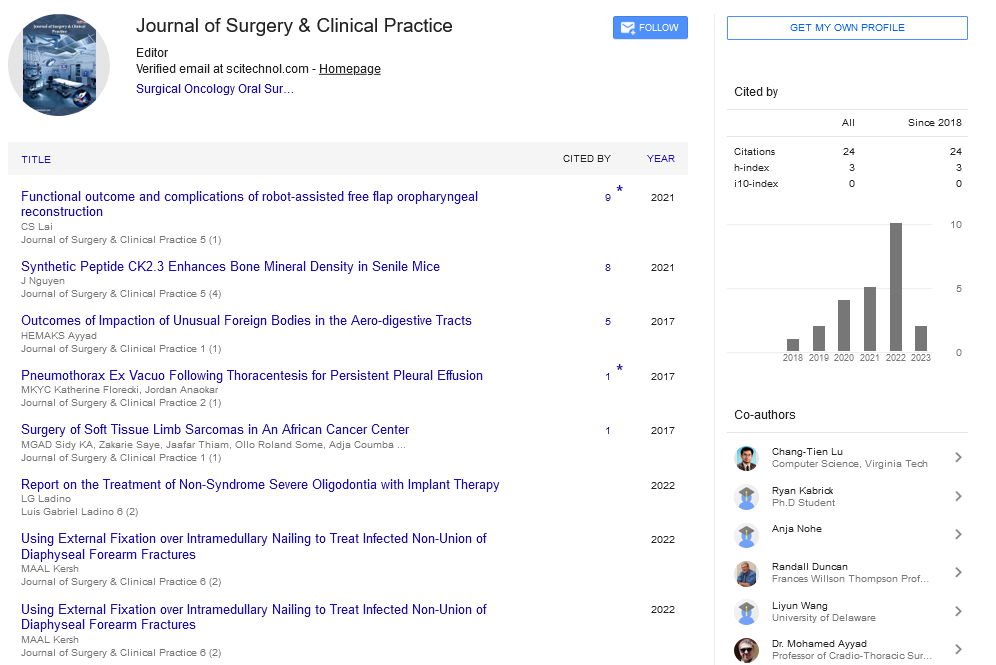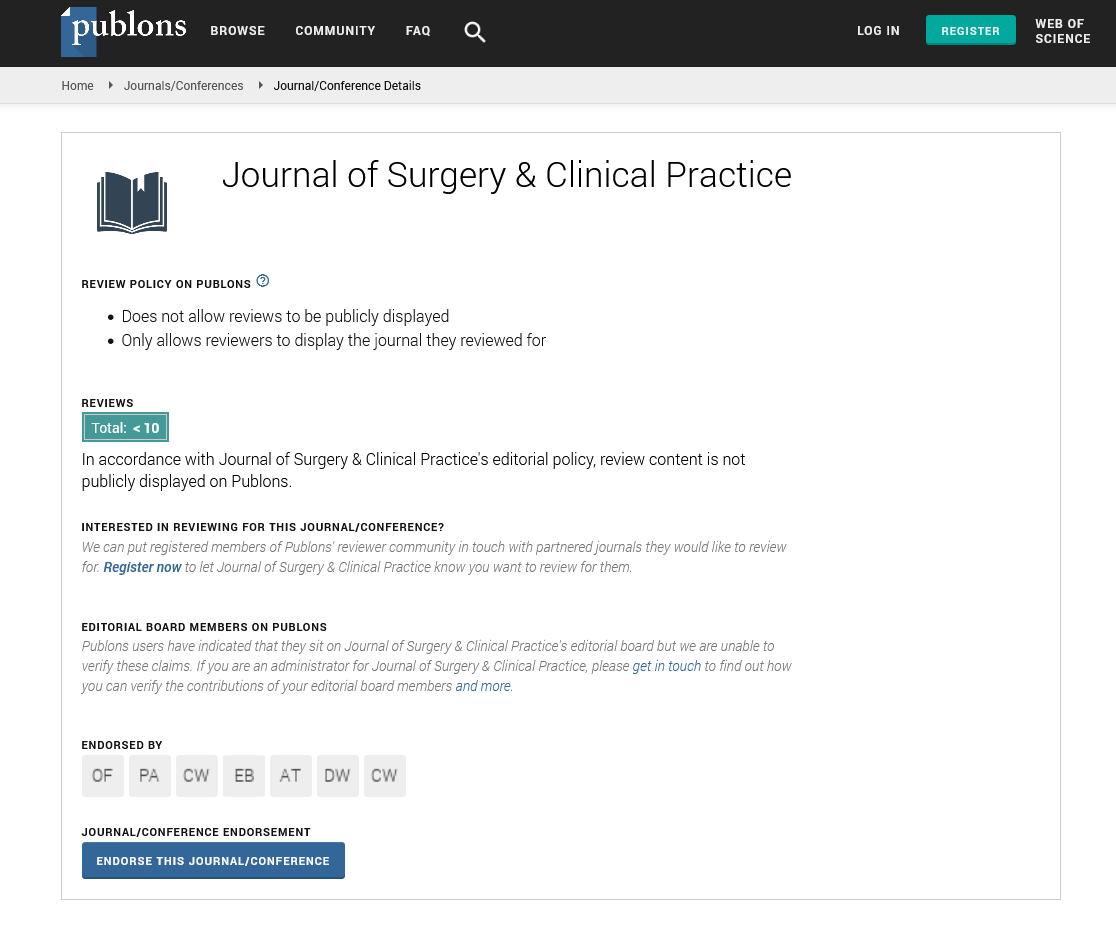Opinion Article, J Surg Clin Prac Vol: 7 Issue: 2
Advancements in Laparoscopic Appendectomy Surgery
Christopher Feindel*
Department of Medicine, University Health Network, Toronto, Ontario, Canada
*Corresponding Author: Christopher Feindel
Department of Medicine, University
Health Network, Toronto, Ontario, Canada
E-mail: fiendel@chris.ca
Received date: 23 May, 2023, Manuscript No. JSCP-23-107198;
Editor assigned date: 26 May, 2023, PreQC No. JSCP-23-107198 (PQ);
Reviewed date: 12 June, 2023, QC No. JSCP-23-107198;
Revised date: 19 June, 2023, Manuscript No. JSCP-23-107198 (R);
Published date: 26 June, 2023 DOI: 10.35248/JSCP.23.7.100382
Citation: Feindel C (2023) Advancements in Laparoscopic Appendectomy Surgery. J Surg Clin Prac 7:2.
Description
Laparoscopic appendectomy is a surgical procedure performed to remove an inflamed appendix. It is a minimally invasive technique that has gained popularity over the years due to its advantages over traditional open appendectomy. Laparoscopic appendectomy is indicated for patients diagnosed with acute appendicitis, a condition characterized by inflammation of the appendix. The most common symptoms include abdominal pain, fever, nausea, and elevated white blood cell count. Diagnostic imaging techniques, such as ultrasound or Computed Tomography (CT) scan, aid in confirming the diagnosis and assessing the severity of the inflammation. In some cases, laparoscopic appendectomy may also be performed for patients with complicated appendicitis, such as perforation or abscess formation. This procedure is typically performed under general anesthesia. The surgeon makes several small incisions in the abdomen, usually ranging from 0.5 to 1 centimeter in length. Carbon dioxide gas is then used to create a pneumoperitoneum, which helps create space in the abdominal cavity and provides a clear view for the surgeon. A trocar, a hollow tube, is inserted through one of the incisions to allow the passage of a laparoscope a long, thin tube with a camera and light source attached to it. The laparoscope provides magnified images of the abdominal cavity on a monitor, allowing the surgeon to visualize the appendix and surrounding structures.
Additional trocars are inserted through the other incisions to accommodate specialized surgical instruments. The surgeon carefully identifies and dissects the inflamed appendix, taking care to avoid any injury to nearby structures. Once the appendix is isolated, it is ligated or stapled, and the base is divided. The appendix is then removed through one of the incisions, often placed within an endoscopic retrieval bag to prevent contamination of the abdominal cavity. The incisions are closed with absorbable sutures or surgical staples. After laparoscopic appendectomy, patients are usually monitored in a recovery area before being transferred to a regular hospital room. Pain medication is provided to manage postoperative discomfort. The length of hospital stay is typically shorter compared to open appendectomy, with most patients being discharged within 24 to 48 hours after surgery. Oral intake is gradually resumed, starting with clear liquids and advancing to a regular diet as tolerated. Patients are encouraged to ambulate and engage in light physical activity to promote recovery and prevent complications such as blood clots. This appendectomy offers several advantages over open appendectomy. The most notable benefit is the reduced postoperative pain experienced by patients. The smaller incisions made during laparoscopic surgery result in less tissue trauma and a decreased need for narcotic pain medication. This, in turn, facilitates a faster recovery and shorter hospital stay. This also offers cosmetic benefits, as the smaller incisions leave minimal scarring. Studies have shown that laparoscopic surgery results in similar rates of postoperative infections, wound complications, and intra-abdominal abscess formation. Furthermore, laparoscopic appendectomy has a lower incidence of incisional hernias compared to open surgery.
Laparoscopic appendectomy is a safe and effective surgical procedure for the treatment of acute appendicitis. It offers numerous advantages over open appendectomy, including reduced postoperative pain, faster recovery, shorter hospital stays, and improved cosmetic outcomes. The procedure has comparable complication rates to open surgery while providing the added benefits of minimally invasive surgery. This surgery continues to evolve with advancements in technology and surgical techniques, further enhancing patient outcomes and expanding its application in various clinical settings.
 Spanish
Spanish  Chinese
Chinese  Russian
Russian  German
German  French
French  Japanese
Japanese  Portuguese
Portuguese  Hindi
Hindi 
